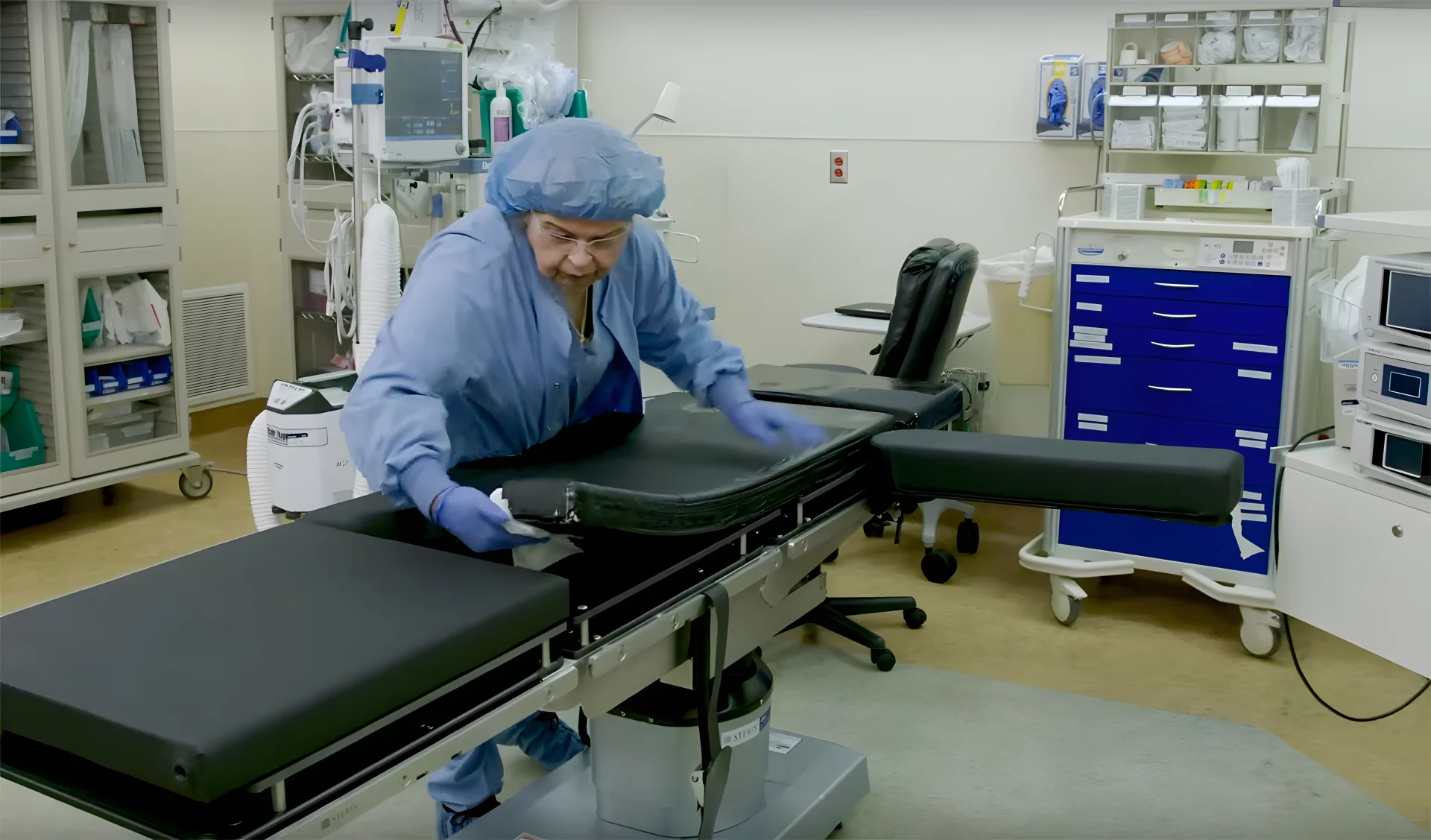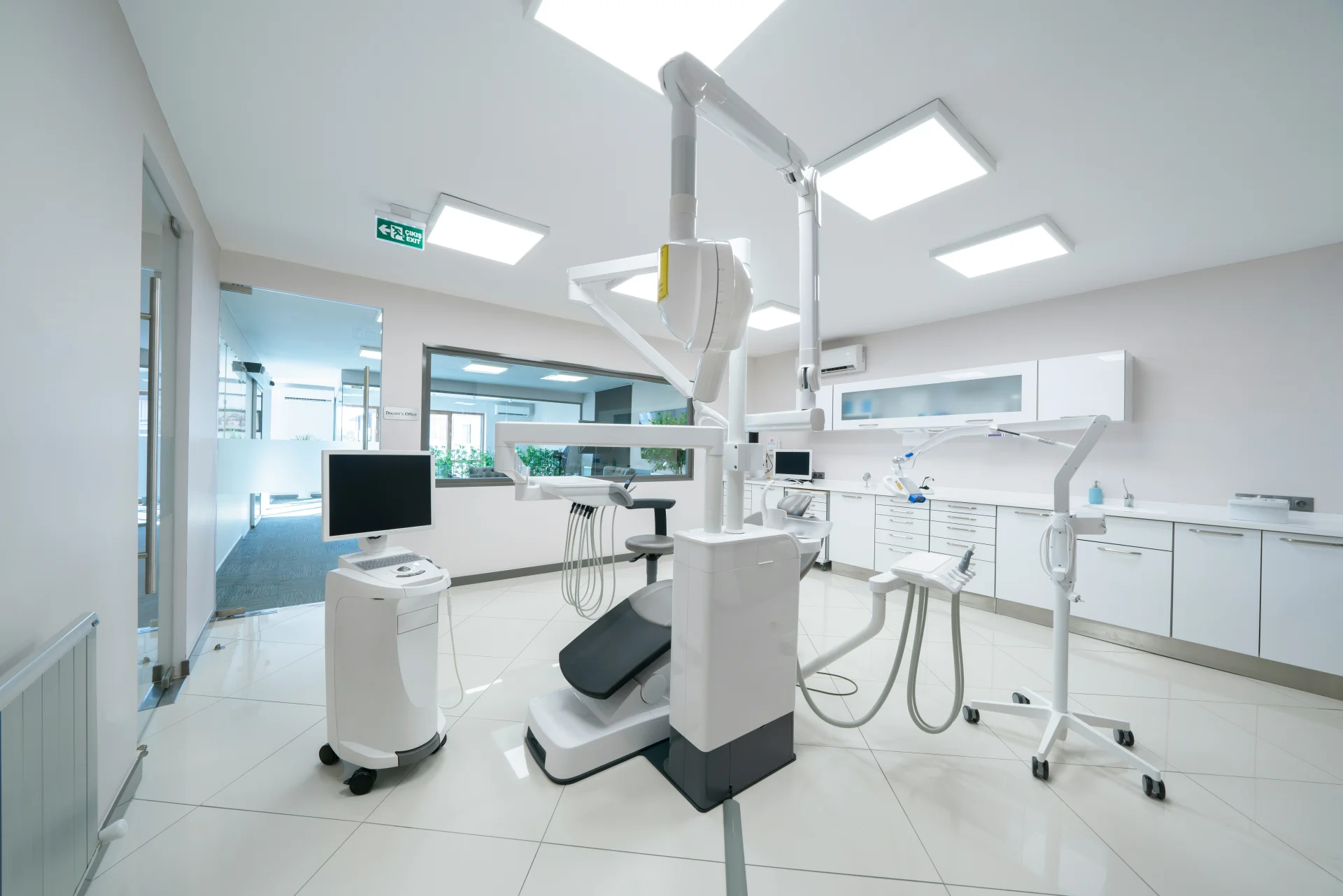Terminal Cleaning Services
Professional post-discharge and post-transfer cleaning and disinfection services that eliminate pathogens and prepare patient rooms for the next occupant. Following AHE guidelines and CDC protocols for comprehensive terminal sanitization.
What Is Terminal Cleaning?
Terminal cleaning is the thorough cleaning and disinfection performed immediately after a patient is discharged or transferred from their room. This critical process removes organic material and significantly reduces microbial contamination to ensure no transfer of microorganisms to the next patient. Combined with our daily maintenance cleaning and periodic deep cleaning, we provide comprehensive infection control.
CDC Definition
"Terminal (discharge/transfer) cleaning is cleaning and disinfection that is performed after the patient is discharged or transferred. Includes the removal of organic material and significant reduction and elimination of microbial contamination."
Primary Objectives
- Eliminate healthcare-associated infection risks
- Remove all organic matter and bodily fluids
- Disinfect all surfaces with EPA-registered products
- Prepare rooms for immediate patient occupancy
- Ensure compliance with infection control standards

AHE & CDC Standards Compliance
Our terminal cleaning protocols follow Association for the Health Care Environment (AHE) guidelines and CDC best practices for healthcare environmental cleaning
AHE Environmental Standards
Following Association for the Health Care Environment (AHE) Practice Guidance for Health Care Environmental Cleaning, 3rd Edition - the essential resource for environmental cleaning and disinfection.
- Multi-disciplinary infection prevention approach
- Collaboration between departments
- Bundled best practices implementation
CDC Core Components
Implementing all six CDC core components for maintaining a clean, safe healthcare environment with focus on systematic protocols and monitoring.
- Integration into hospital safety culture
- Comprehensive staff training programs
- Standardized cleaning protocols
- Effectiveness monitoring and feedback
Joint Commission Requirements
Meeting updated 2024 Joint Commission infection prevention requirements with emphasis on equipment cleaning and interdisciplinary collaboration.
- IC.04.01.01 EP 2 multi-disciplinary approach
- IC.04.01.01 EP 4 equipment cleaning protocols
- Communication between departments
Terminal Cleaning Protocol
Systematic approach following CDC guidelines for comprehensive patient room decontamination
Pre-Cleaning Assessment & Preparation
Coordinate with clinical staff to ensure patient discharge is complete. Review patient history for specific pathogen concerns (C. difficile, Candida auris, MDROs).
- Verify patient discharge/transfer completion
- Review infection control requirements
- Assess room for contamination level
- Gather appropriate PPE and supplies
Disposable Item Removal
Remove and properly dispose of all used personal care items, facility-provided linens, and contaminated materials.
- Discard disposable personal care items
- Remove soiled linens for reprocessing
- Clear all patient belongings
- Remove contaminated waste containers
Medical Equipment Decontamination
Remove patient care equipment for proper reprocessing or perform in-room decontamination per manufacturer guidelines.
- IV poles and medical devices
- Bedside monitors and equipment
- Patient lifts and mobility aids
- Specialized medical instruments
Systematic Surface Cleaning
Thorough cleaning of all surfaces to remove organic material before disinfection. Clean from least contaminated to most contaminated areas.
- High-touch surfaces (bed rails, light switches)
- Patient bed and furniture
- Floors, walls, and ceiling fixtures
- Bathroom and toilet facilities
EPA-Registered Disinfection
Apply EPA-registered hospital-grade disinfectants with appropriate contact time to eliminate all pathogens and microorganisms.
- EPA List N approved products
- Proper contact time adherence
- Complete surface coverage
- Pathogen-specific protocols when indicated
Room Setup & Final Inspection
Prepare room for next patient with fresh linens and supplies. Conduct comprehensive quality inspection to ensure completeness.
- Fresh linens and patient supplies
- Equipment functionality verification
- Visual inspection for cleanliness
- Documentation and sign-off
Minimum Cleaning Time (MCT)
Following CDC recommendations, we establish Minimum Cleaning Time (MCT) standards for terminal cleaning based on room type, contamination level, and specific pathogen considerations. Our experienced personnel ensure adequate time allocation for thorough decontamination.
Standard Room Types
Factors Affecting Cleaning Time
Pathogen Type
C. difficile, norovirus, and MDROs require extended contact time and specialized protocols
Patient Condition
Patients with wounds, diarrhea, or infectious conditions require more intensive cleaning
Room Complexity
Equipment density, room size, and special surfaces impact cleaning duration
Contamination Level
Visible contamination or known exposure requires additional cleaning steps
Pathogen-Specific Protocols
Specialized terminal cleaning procedures for high-risk pathogens and multidrug-resistant organisms
Clostridioides difficile
Spore-forming bacteria requiring sporicidal agents and extended contact times.
- Bleach-based sporicidal disinfectants
- 10-minute minimum contact time
- Enhanced PPE requirements
- Double-cleaning protocol
Candida auris
Emerging fungal pathogen with high resistance to standard disinfectants.
- Quaternary ammonium or hydrogen peroxide
- Extended surface contact time
- Environmental sampling protocols
- Specialized training requirements
Multidrug-Resistant Organisms
MRSA, VRE, CRE, and other MDROs requiring enhanced precautions.
- EPA List N registered products
- Contact precaution protocols
- Enhanced monitoring procedures
- Staff notification systems
Norovirus & Enteric Pathogens
Highly contagious viruses requiring specific disinfection approaches.
- Sodium hypochlorite solutions
- Immediate post-incident cleaning
- Extended quarantine periods
- Enhanced personal protection

Quality Monitoring & Documentation
Comprehensive quality assurance program to ensure terminal cleaning effectiveness and regulatory compliance with detailed documentation and feedback systems.
Monitoring Methods
Visual Inspection
Systematic visual assessment of all cleaned surfaces and areas
ATP Testing
Adenosine triphosphate monitoring for organic contamination detection
Fluorescent Marking
UV-visible markers to verify cleaning completion on high-touch surfaces
Environmental Cultures
Microbiological sampling for pathogen-specific cleaning verification
Required Documentation
- Patient discharge verification
- Cleaning completion time stamps
- Products used and contact times
- Staff signatures and certifications
- Quality inspection results
- Room readiness for occupancy
Regulatory Compliance
All documentation meets requirements for Joint Commission, CMS, state health departments, and infection control audits.
Professional Terminal Cleaning Services
Ensure patient safety and regulatory compliance with our comprehensive terminal cleaning services. Flexible scheduling to work around your facility operations.